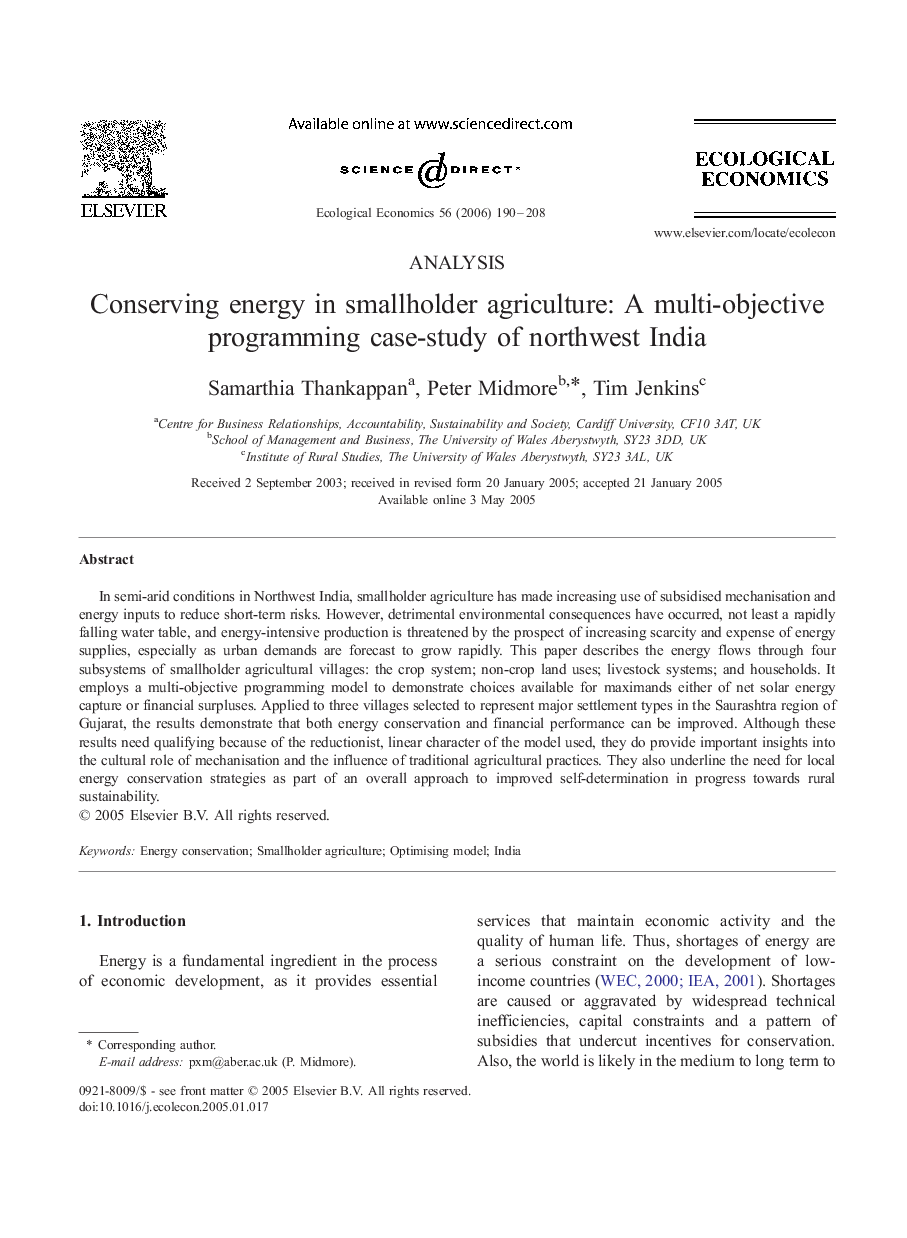| Article ID | Journal | Published Year | Pages | File Type |
|---|---|---|---|---|
| 5052225 | Ecological Economics | 2006 | 19 Pages |
Abstract
In semi-arid conditions in Northwest India, smallholder agriculture has made increasing use of subsidised mechanisation and energy inputs to reduce short-term risks. However, detrimental environmental consequences have occurred, not least a rapidly falling water table, and energy-intensive production is threatened by the prospect of increasing scarcity and expense of energy supplies, especially as urban demands are forecast to grow rapidly. This paper describes the energy flows through four subsystems of smallholder agricultural villages: the crop system; non-crop land uses; livestock systems; and households. It employs a multi-objective programming model to demonstrate choices available for maximands either of net solar energy capture or financial surpluses. Applied to three villages selected to represent major settlement types in the Saurashtra region of Gujarat, the results demonstrate that both energy conservation and financial performance can be improved. Although these results need qualifying because of the reductionist, linear character of the model used, they do provide important insights into the cultural role of mechanisation and the influence of traditional agricultural practices. They also underline the need for local energy conservation strategies as part of an overall approach to improved self-determination in progress towards rural sustainability.
Related Topics
Life Sciences
Agricultural and Biological Sciences
Ecology, Evolution, Behavior and Systematics
Authors
Samarthia Thankappan, Peter Midmore, Tim Jenkins,
